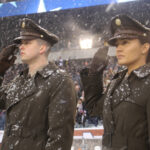“What do you do for a living?”
“I delve into the world of sports uniforms.”
“Wait, didn’t the White Sox once play in shorts?”
This very conversation, or a variation of it, has echoed through my life more times than I can count. The mere mention of the Chicago White Sox Shorts Uniform evokes a strong reaction, particularly from baseball fans of a certain age whose interest in uniform aesthetics might be casual at best. It seems this quirky uniform choice is the first thing that springs to mind for many when baseball uniforms enter the discussion.
Decades have passed, yet these otherwise unremarkable baseball games from the 1970s are brought up far more frequently than many other moments from that era. The Houston Astros’ rainbow jerseys? Old news. Powder blue pullovers? Yawn. Reggie Jackson’s three home runs in a single World Series game? Incredible, but still overshadowed! For many, it’s all about the shorts!
So, to answer the perennial question: yes, the White Sox indeed sported shorts.
This sartorial experiment unfolded during the U.S. Bicentennial year of 1976, conceived by the innovative and often eccentric mind of Mr. William Veeck Jr., better known as Bill Veeck.
Bill Veeck was a man who thrived on challenging the conventional. His career was punctuated by audacious stunts and groundbreaking initiatives. There were the whimsical acts – signing Eddie Gaedel, a player standing at just 3’7″ and wearing uniform number “1/8” (who famously walked on four pitches in his single plate appearance), and employing Max Patkin, a self-proclaimed “baseball clown,” as an official bench coach. He even staged a symbolic burial of the Cleveland Indians’ 1948 American League pennant after their subsequent season faltered. During his ownership of the St. Louis Browns in the 1950s, he famously allowed fans to dictate in-game strategies through voting.
However, Veeck’s legacy extends far beyond mere novelty. He reportedly attempted to purchase the Philadelphia Phillies with the intention of filling the roster with Negro League stars, a bold move that predated Jackie Robinson’s debut by five years. This plan was ultimately thwarted by segregationist forces within the National League. When the color barrier finally broke in 1947, Veeck, then owner of the Cleveland Indians, signed Larry Doby, effectively breaking the color barrier in the American League. When three of his players refused to shake Doby’s hand, Veeck promptly removed them from the team. Further cementing his commitment to integration, Veeck signed Negro League legend Satchel Paige in 1948 at the age of 42, making him the oldest rookie in Major League history.
But our focus remains on Veeck’s impact on baseball uniforms, a subject central to this website. While Veeck is also credited with popularizing the addition of players’ names to jersey backs, we’re here to delve specifically into the story of those infamous “Hollywood Shorts,” as he affectionately called them.
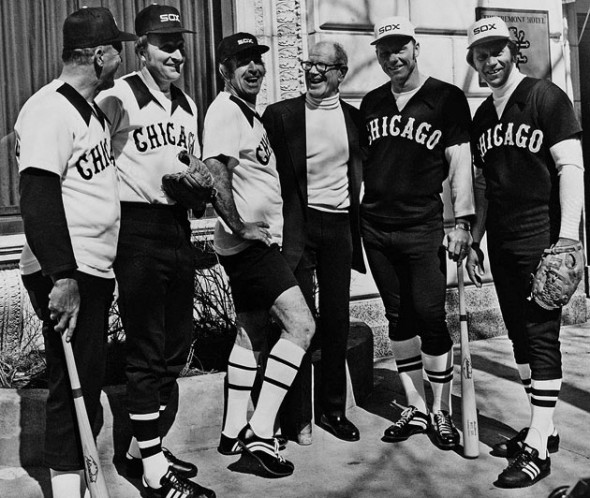 Bill Veeck unveiling the White Sox shorts uniforms in 1976
Bill Veeck unveiling the White Sox shorts uniforms in 1976
Bill Veeck (center, not in uniform) with former White Sox players, showcasing the new uniform styles in March 1976.
It was March 1976 at the Tremont Hotel in Chicago when Veeck orchestrated a uniform reveal for the ages. Former White Sox players were enlisted to model the team’s new look. This unveiling introduced the uniform design that many now instantly associate with the 1970s White Sox – the oversized collars, the team name emblazoned across the chest in an arched “Tuscan” style font, and midnight blue pants. While these uniforms have garnered a considerable fan following today, they weren’t without their detractors, including, famously, ace pitcher Chris Sale, who expressed his displeasure rather dramatically when the team wore throwbacks of this era.
The 1976 White Sox uniform set offered three distinct pants options: “clamdiggers,” essentially the standard long pants worn by most MLB players today; “knickerbockers,” short pants that finished just below the knee, paired with high socks – still a style seen occasionally but less prevalent than in previous eras; and the headline-grabbing “Hollywood shorts.” These shorts, named after the short-pants uniforms previously worn by the minor league Hollywood Stars in the 1950s, were traditional shorts, the kind you might wear for casual summer activities. Despite exposing the knees, player safety wasn’t entirely overlooked. The high socks worn with the shorts incorporated special rubber padding just below the knee, designed to act as a sliding pad, offering protection from potential abrasions.
Unsurprisingly, the shorts stole the show at the uniform unveiling. (One can only imagine the buzz if SportsLogos.Net or even Twitter had existed in 1976!)
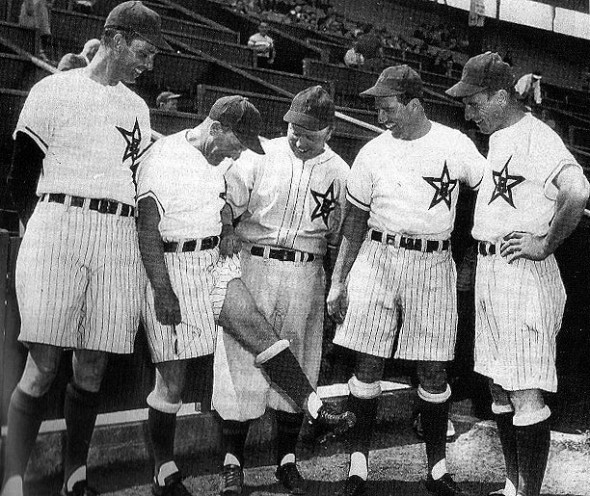 The Hollywood Stars baseball team wearing shorts in 1950
The Hollywood Stars baseball team wearing shorts in 1950
The Hollywood Stars of the Pacific Coast League sported shorts uniforms in 1950.
“Players should be concerned with comfort, not vanity. In 95° weather, an athlete should be happy to wear short pants and forget about his knobby knees,” Veeck declared to the press. Adding his characteristic humor, he quipped, “Hell, I’ve got worse looking knees than any of my players. One’s solid wood!” referencing his wooden leg, a result of a World War II injury.
Mic drop indeed.
Four months into the 1976 season, every White Sox uniform combination except the shorts had seen game action. As anticipation (and perhaps apprehension) built, players were quizzed about when, or if, the infamous shorts would finally make their on-field debut. White Sox second baseman Jack Brohamer joked, “I’m not wearing short pants unless they let me wear a halter top too!” Meanwhile, future Hall of Fame pitcher Goose Gossage requested “a little notice” to allow time for leg hair removal.
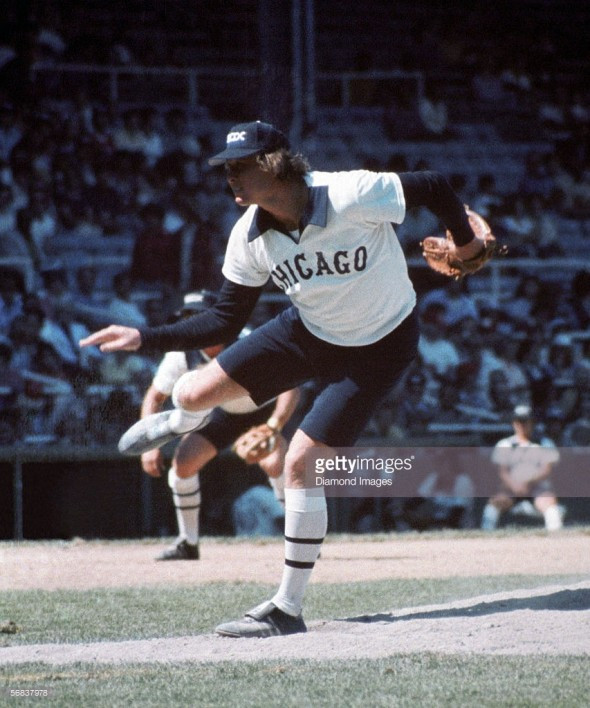 Goose Gossage in the White Sox shorts uniform in 1976
Goose Gossage in the White Sox shorts uniform in 1976
Goose Gossage, sporting leg hair, wearing the White Sox blue shorts uniform on August 8, 1976.
Finally, on August 8, 1976 – forty years to the day from the original article’s publication – the White Sox took the field for the first game of a doubleheader against the Kansas City Royals, clad in the blue shorts, paired with their collared white tops and solid blue baseball caps.
Their opponents that Sunday afternoon were the formidable Kansas City Royals, leading the American League West Division with a 66-41 record, a commanding 11-game lead over the Oakland A’s, and a distant 15 games ahead of the fourth-place White Sox.
Unsurprisingly, the Royals had plenty to say about the White Sox’s unconventional attire.
“You guys are the sweetest team we’ve seen yet!” Kansas City first baseman John Mayberry was overheard teasing White Sox players before the game. Later, with Ralph Garr at the plate for Chicago, Mayberry’s voice boomed again, this time directed at Garr, “If you get over to first base I’m gonna give you a big kiss!”
Garr reached first base, but Mayberry, thankfully for Garr, did not follow through on his promise.
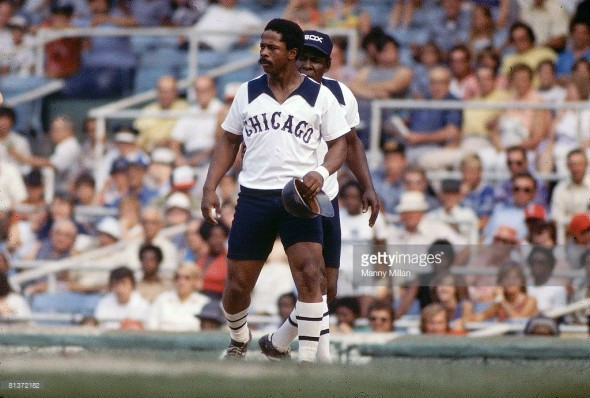 Ralph Garr wearing White Sox shorts uniform at first base in 1976
Ralph Garr wearing White Sox shorts uniform at first base in 1976
Ralph Garr at first base with coach Minnie Minoso, both wearing the White Sox shorts uniforms in August 1976.
The on-field ribbing didn’t seem to faze the White Sox. They won the first game against the Royals 5-2, prompting some to wonder if these unorthodox shorts might actually be a good omen. However, any such notion was short-lived as the Royals rebounded to win the second game 7-2, with the White Sox having reverted to their traditional long pants.
“They felt great,” White Sox manager Paul Richards commented on the shorts after the game. “I think they’d be great in warm weather, they’re alright!”
When questioned about the uniform change between games, potentially contributing to the split doubleheader, Richards explained, “it was getting a little chilly out there.”
Brohamer, who had earlier quipped about requiring a halter top to wear the shorts, seemed to have changed his perspective. “I like them, they’re very comfortable and everybody seems to like them.”
The press reaction was a mixed bag, with some embracing the novelty…
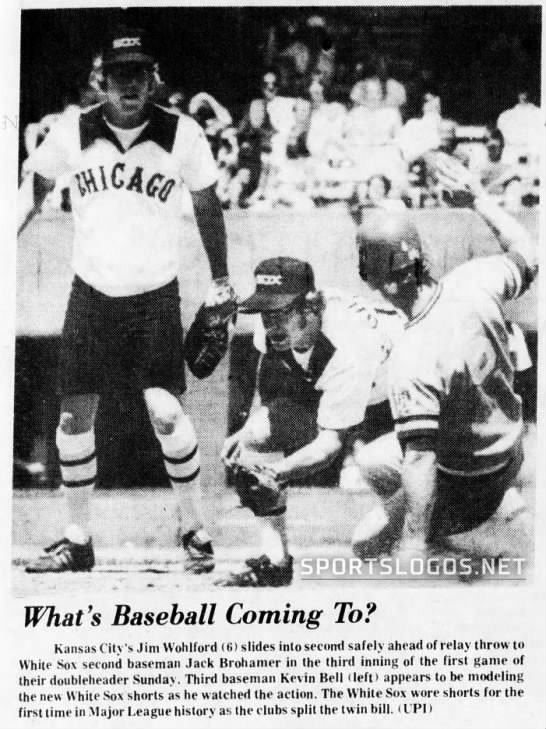 Newspaper clippings showing press coverage of White Sox shorts uniform in 1976
Newspaper clippings showing press coverage of White Sox shorts uniform in 1976
Newspaper headlines from August 9, 1976, showcasing both positive and negative reactions to the White Sox shorts.
…while others ridiculed the very idea of baseball shorts in the following morning’s papers.
Amidst the flurry of press coverage, both positive and negative, Veeck, ever the showman, was keen to bring the shorts back. He announced they would be worn again on August 21st against the Baltimore Orioles.
Attendance figures saw an uptick for the game, and the White Sox emerged victorious, defeating the Orioles 11-10 in extra innings. Perhaps there was something to this shorts experiment after all.
The White Sox donned the shorts again the very next afternoon for a day game, part two of a doubleheader against the Orioles. This time, however, their luck ran out. The White Sox lost, attendance dipped, and the media’s fascination with baseball shorts seemed to wane.
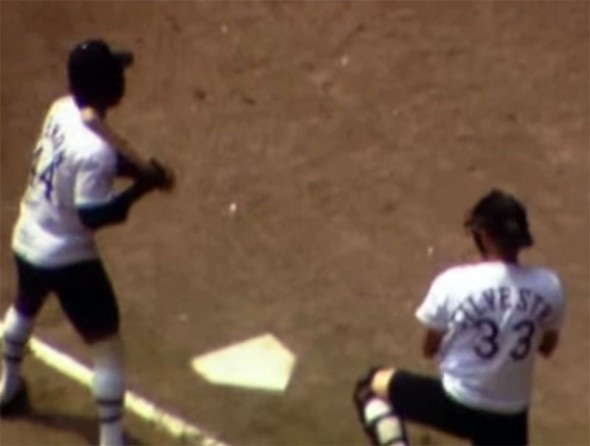 Home video still showing White Sox catcher in shorts uniform in 1976
Home video still showing White Sox catcher in shorts uniform in 1976
A frame from home camera footage illustrating that even the catchers participated in the shorts uniform experiment on August 22, 1976.
So, what ultimately became of the White Sox shorts uniform?
August 22, 1976 marked their final appearance. Declining attendance and diminishing media interest were all it took for Veeck to shelve the idea (consistent with Veeck’s approach – maximize the novelty until it runs its course and then move on). In their brief history, the White Sox record in shorts was a winning 2-1. Notably, Jack Brohamer (“Mr. Haltertop”) holds the unique distinction of being the only Major League player to ever hit a home run while wearing baseball shorts.
It’s highly improbable that Chicago will ever revisit the shorts uniform. While this is speculative, it’s unlikely that players, or the players’ union, would approve, likely citing increased injury risk as the official justification, overshadowing any aesthetic concerns. An inquiry to the team about a potential revival of the shorts has, as of yet, gone unanswered (though, in fairness, the query was only sent recently).
The team has, however, revisited this broader uniform set several times in the forty years since, consistently opting for long pants in throwback iterations. There have been instances where plans to wear the full throwback uniform, including long pants, were derailed. The well-known Chris Sale incident last month involved the pitcher famously destroying the throwback jerseys during batting practice, resulting in a suspension. Additionally, in 2001, the team opted against wearing the throwbacks before a scheduled 1977 throwback game in Toronto (which this author attended specifically for the throwbacks), choosing to wear their regular alternate jerseys with the throwback caps instead.
As for Bill Veeck, he continued his legacy of unconventional promotions, culminating in the infamous “Disco Demolition Night” in 1979, which descended into a riot and forced the White Sox to forfeit a game.
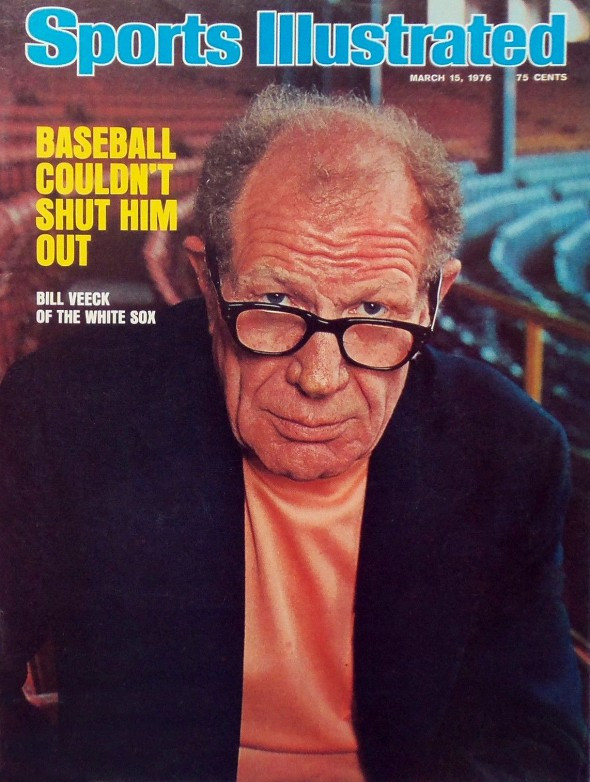 Bill Veeck in 1976 portrait
Bill Veeck in 1976 portrait
A portrait of Bill Veeck in 1976, the year of the White Sox shorts experiment.
Bill Veeck ultimately sold the White Sox and left baseball in 1981. He passed away six years later after battling cancer. His ingenuity and genuine passion for baseball earned him a posthumous induction into the National Baseball Hall of Fame in 1991 as a builder. Even his promotional stunts were acknowledged on his Hall of Fame plaque, but, sadly, no mention was made of those unforgettable shorts, which continue to be a topic of conversation and fascination to this day.

